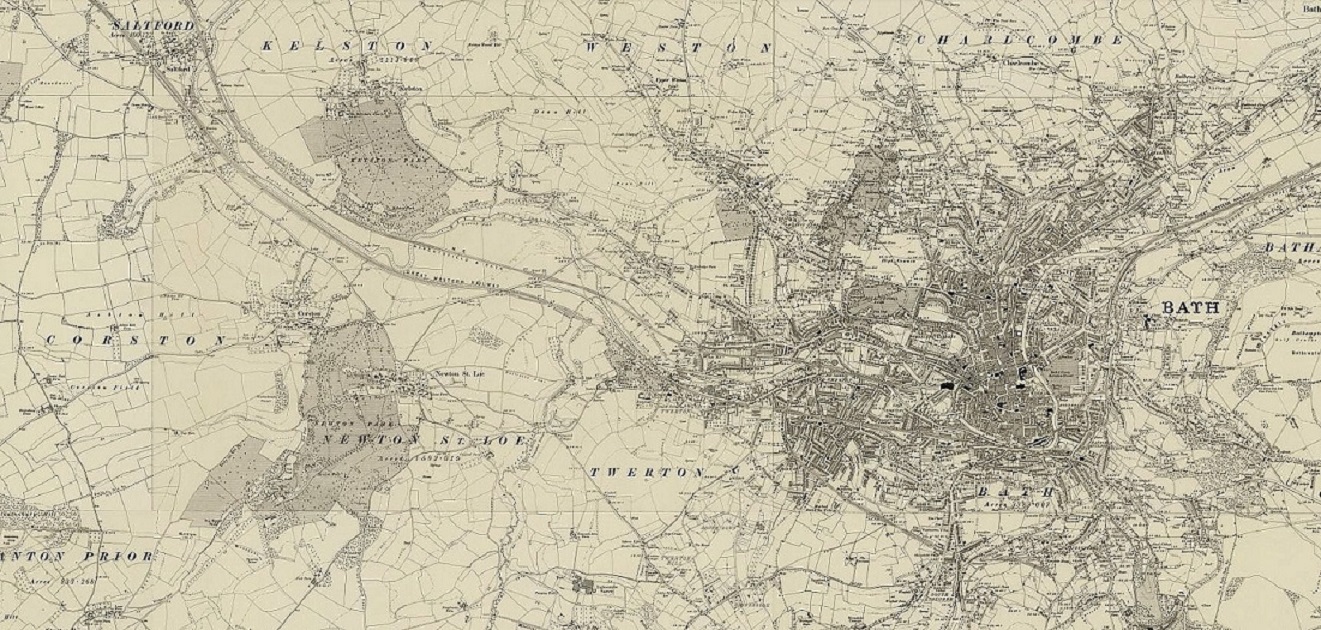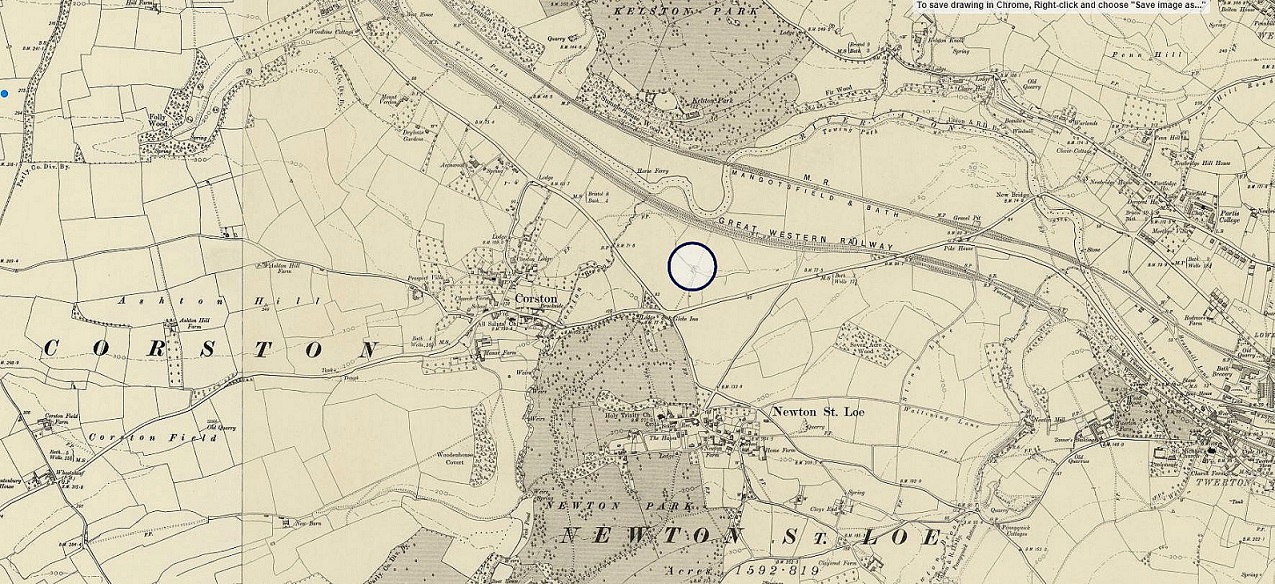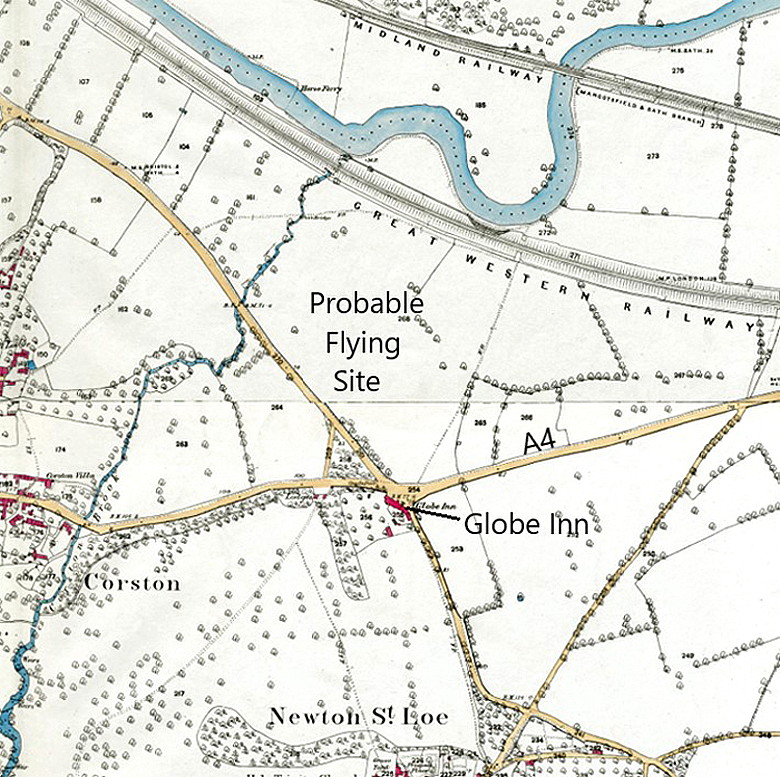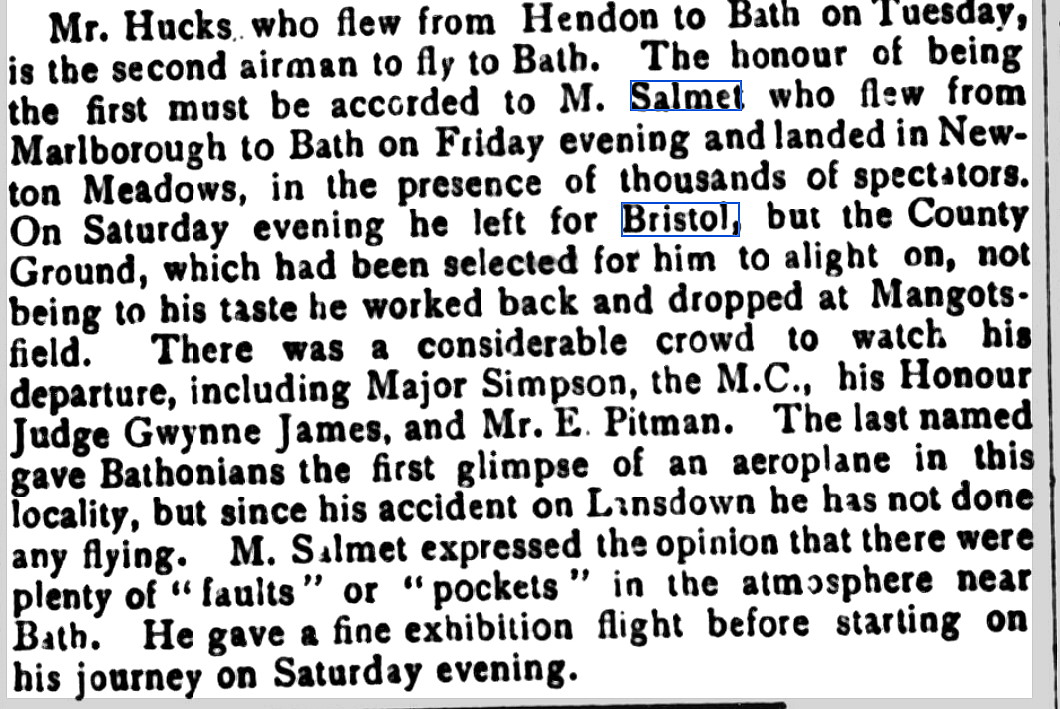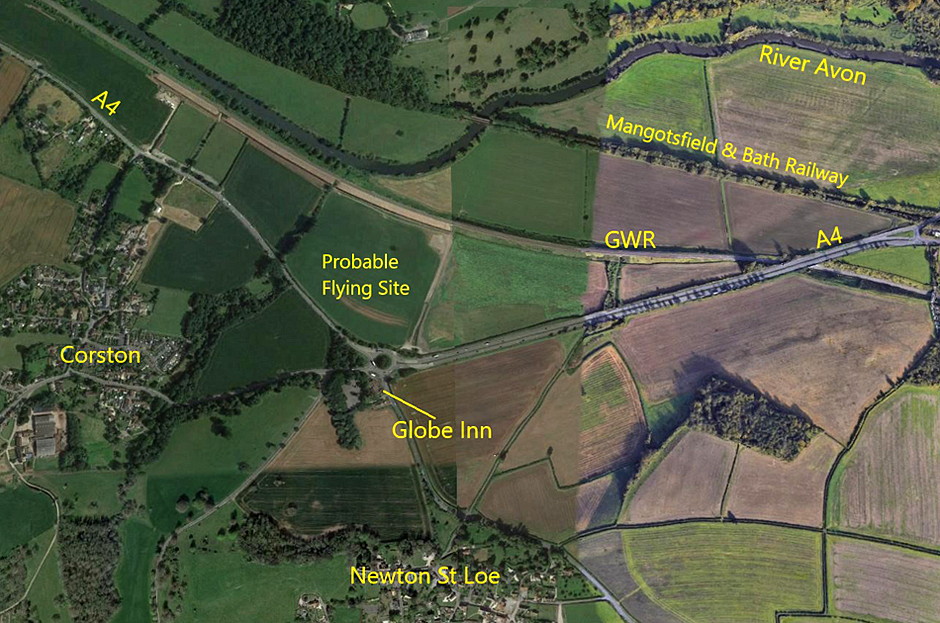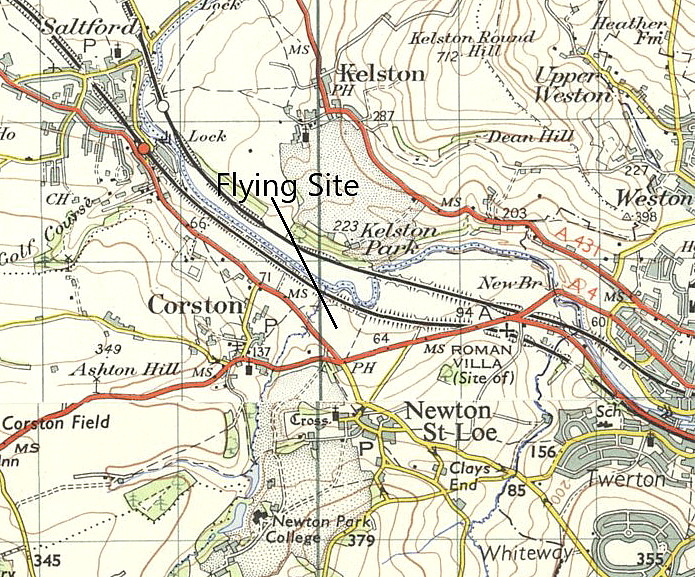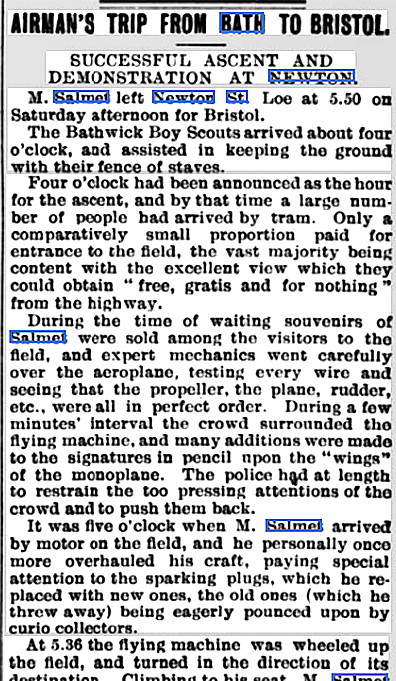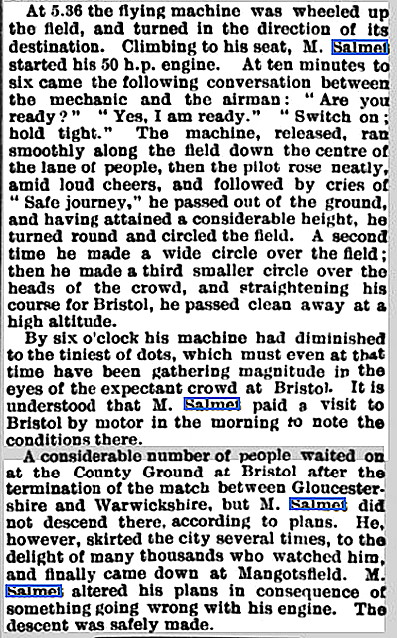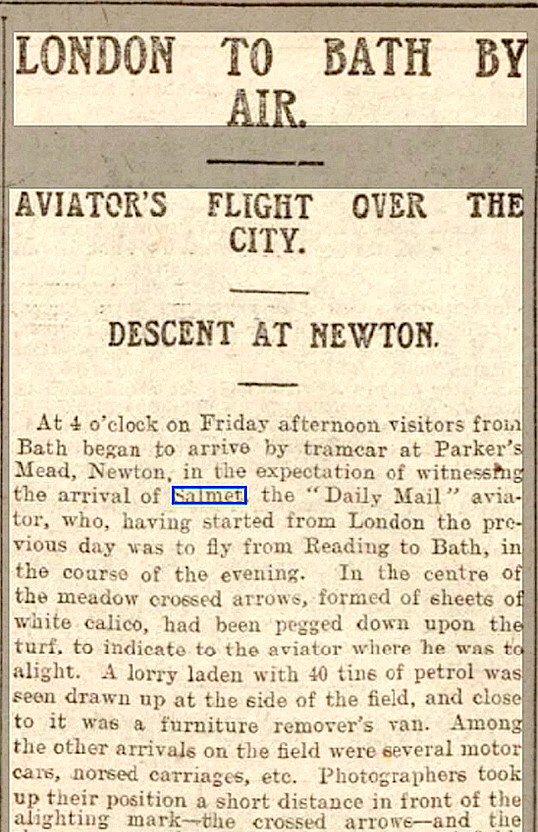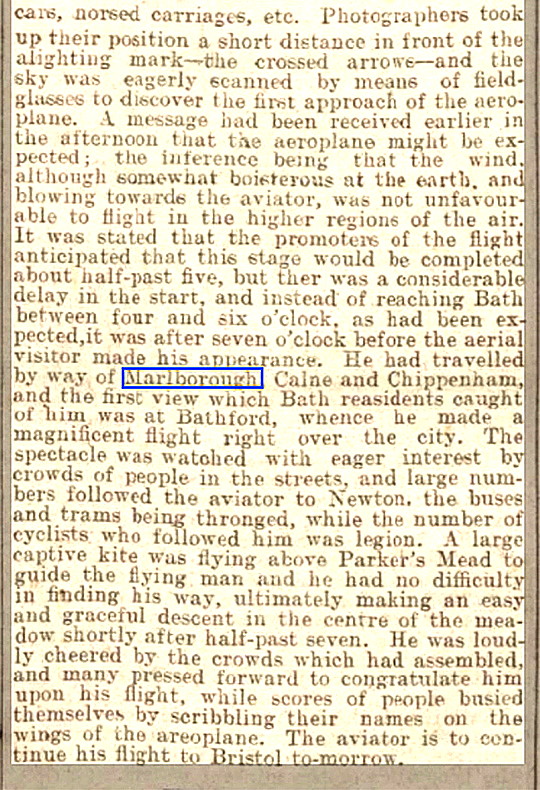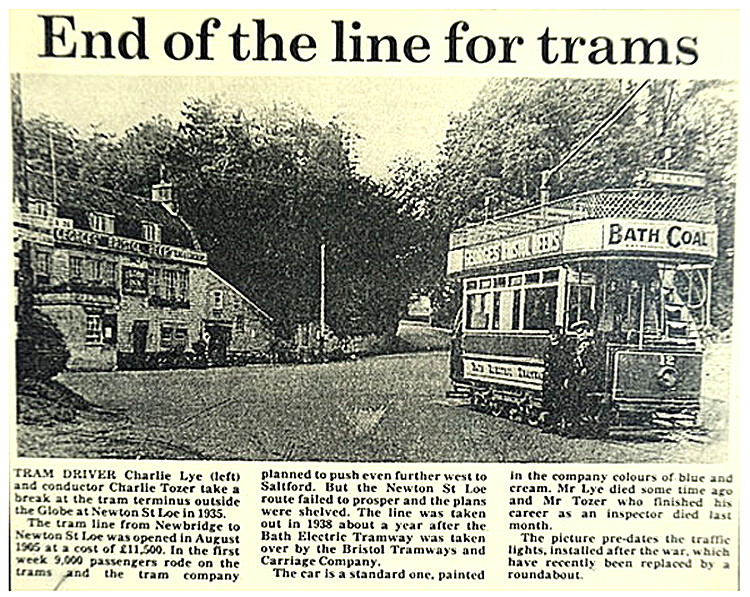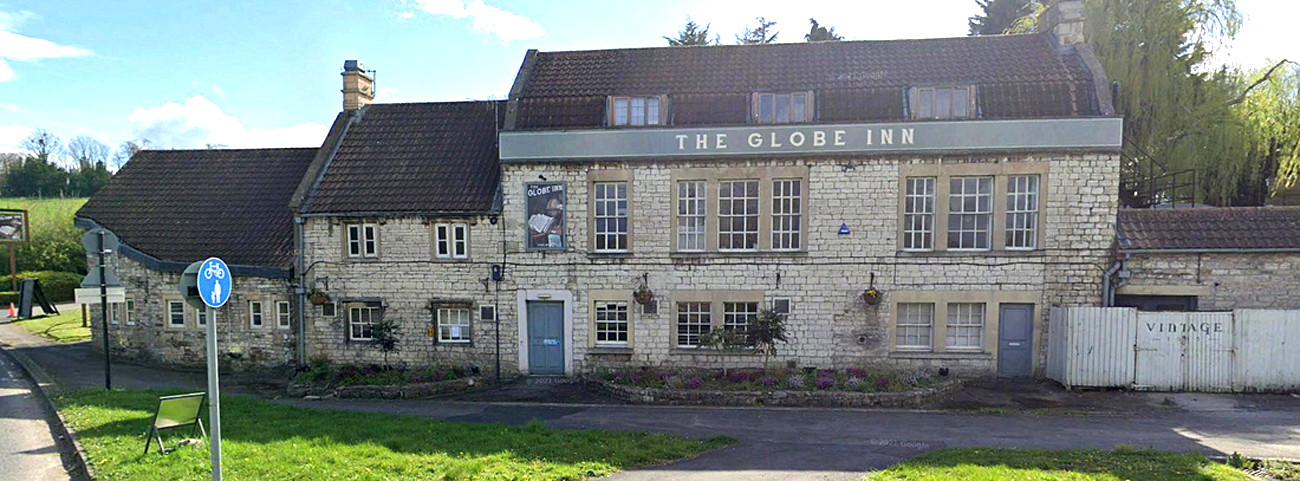Newton St Loe
Note: This map only shows, roughly, the suspected location Salmet might have used.
NEWTON St LOE: Temporary Landing Ground
Note: Both of these maps were kindly provided by Mr Tim Hill
Used by: Henri Salmet
Location: Roughly 2.5nm W of Bath city centre
Period of operation: 18th May 1912
NOTES: This information was kindly provided by Mr Tim Hill in May 2019. He readily admits he does not know exactly where Salmet landed, but suspects the water meadows south of the A4? The name given in one newspaper article is PARKER'S MEADOW, but that name seems to have disappeared.
What I think is of special interest, reading the newspaper reports, is that this site was obviously a planned destination. And, considerable efforts had been made in advance, to both welcome Salmet and facilitate his requirements. Below is an example published by the Bath Chronicle, who didn't approve of paragraphs:
LONDON TO BATH BY AIR
AVIATORS FLIGHT OVER THE CITY
DESCENT AT NEWTON
"At 4 o'clock on Friday afternoon visitors from Bath began to arrive by tramcar at Parker's Mead, Newton, in the expectation of witnessing the arrival of Salmet, the "Daily Mail" aviator, who, having started from London the previous day was to fly from Reading to Bath, in the course of the evening. In the centre of the meadow crossed arrows, formed of sheets of white calico, had been pegged down upon the turf, to indicate to the aviator where he was to alight. A lorry laden with ten tins of petrol was seen drawn up at the side of the field, and close to it was a furniture remover's van. Among the other arrivals on the field were several motor cars, horsed carriages, etc. Photographers took up their position a short distance in front of the alighting mark - the crossed arrows - and the sky was eagerly scanned by means of field-glasses to discover the first approach of the aeroplane. A message had been received earlier in the afternoon that the aeroplane might be expected; the inference being that the wind, although somewhat boisterous at the earth, and blowing towards towards the aviator, was not unfavourable to flight in the higher regions of the air. It was stated that the promoters of the flight anticipated that this stage would be completed about half-past five, but there was a considerable delay in the start, and instead of reaching Bath between four and six o'clock, as had been expected, it was after seven o'clock before the aerial visitor made his apperance. He had travelled by way of Marlborough, Calne and Chippenham, and the first view Bath residents caught of him was at Bathford, whence he made a magnificent flight right over the city. The spectacle was watched with eager interest by crowds of people in the streets, and large numbers followed the aviator to Newton, the buses and trams being thronged, while the number of cyclists, who followed him was legion. A large captive kite was flying above Parker's Mead to guide the flying man and he had no difficulty in finding his way, ultimately making an easy and graceful descent in the centre of the meadow shortly after half-past seven. He was loudly cheered by the crowds which had assembled, and many pressed forward to congratulate him upon his flight, while scores of people busied themselves by scribbling their names on the wings of the aeroplane. The aviator is to continue his flight to Bristol tomorrow."
It appears that Salmet gave an 'exhibition flight' the next day before departing for Bristol. My interest also involved the "furniture van" parked nearby. I suspect this was full of spare parts, incuding spare wings. It was quite common in those days to have mishaps, especially on landing, and for the aeroplane to be repaired overnight. Salmet had at least two engineers on hand to fettle his machine - as aeroplanes were called in those days.
I would not be at all surprised if the wings were changed overnight, to be re-covered, inspected and repaired at a later date. The idea of dozens of people scribbling their names on the flimsy wooden wings covered in thin fabric fills me with horror. I had not heard such a story before, but perhaps for Salmet it was all part of the project.
A MICHAEL T HOLDER GALLERY
Note: The second item was published in the Clifton Society on the 23rd May 1912.
Note: This article, divided into two parts to make it easier to read, was published in the Somerset Standard on the 24th May.
Note: Regarding the article, in two parts to make it easier to read, Mike Holder has tracked down the original, (quoted above), published in The Bath Chronicle on the 18th May.
A BONUS PICTURE
Mike Holder has also provided this recent picture of The Globe Inn, obtained from Google. I suppose it really should not come as a surprise, but, in doing this research, I found it interesting to discover just how many pubs, inns and hotels have survived. By contrast very, very few garages and 'filling stations' survived.
This area, it now appears, is regularly used for balloon ascents.
We'd love to hear from you, so please scroll down to leave a comment!
Leave a comment ...
Copyright (c) UK Airfield Guide















